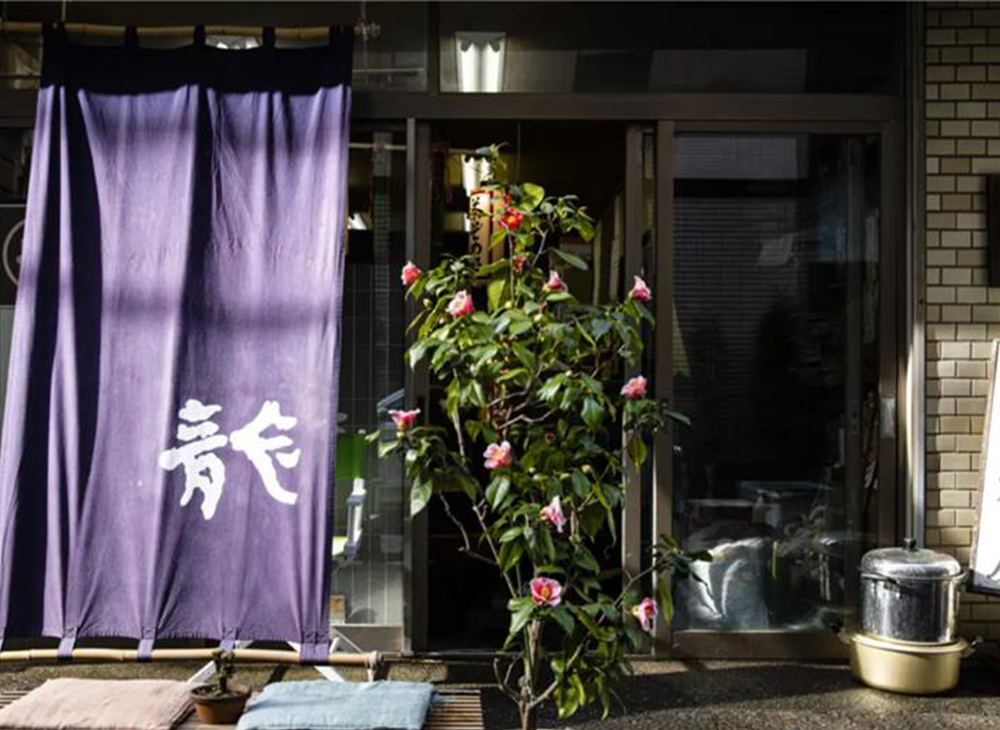
Designated by the Tokyo Metropolitan Government as a traditional craft, Tokyo Kumihimo is an art form in which multiple threads are skillfully braided together. Its origins trace back to the Asuka period (6th–8th century), having been introduced to Japan alongside Buddhism. By the Heian period (8th–12th century), unique techniques had already taken shape. Renowned for its elasticity, ease of tying, and resistance to unravelling, kumihimo has been used throughout history for items such as sutra scroll bindings, tea ceremony implements, and samurai armor fittings.
Currently, kumihimo is most commonly used as obi-jime (sashes) for kimono—a practice that flourished in the late Edo period when kumi-dai (braiding stands) were developed. Until then, artisans often relied on finger braiding (yubiku) alone, creating a wide array of intricate patterns and shapes.
In response to the diminishing supply of domestic raw silk, Ryukobo places great importance on material selection, including the use of 100% domestically produced silk. Seeking new possibilities for kumihimo as both a practical and decorative art form, Ryukobo harnesses its natural elasticity and Edo-inspired color schemes to create interior decor pieces that fit seamlessly into modern, design-oriented spaces.
Sometimes hung from the ceiling like curtains or layered in a frame like harp strings, these interior pieces transform infinitely under the effects of light and wind—enhancing the natural gradations and shadows already present in kumihimo. Since its founding in Nihonbashi, Ryukobo has preserved traditional techniques while continually exploring ways to incorporate kumihimo into contemporary lifestyles.
Currently, kumihimo is most commonly used as obi-jime (sashes) for kimono—a practice that flourished in the late Edo period when kumi-dai (braiding stands) were developed. Until then, artisans often relied on finger braiding (yubiku) alone, creating a wide array of intricate patterns and shapes.
In response to the diminishing supply of domestic raw silk, Ryukobo places great importance on material selection, including the use of 100% domestically produced silk. Seeking new possibilities for kumihimo as both a practical and decorative art form, Ryukobo harnesses its natural elasticity and Edo-inspired color schemes to create interior decor pieces that fit seamlessly into modern, design-oriented spaces.
Sometimes hung from the ceiling like curtains or layered in a frame like harp strings, these interior pieces transform infinitely under the effects of light and wind—enhancing the natural gradations and shadows already present in kumihimo. Since its founding in Nihonbashi, Ryukobo has preserved traditional techniques while continually exploring ways to incorporate kumihimo into contemporary lifestyles.
Philosophy & Vision
Enjoying Colors as if Gathering Wildflowers

To pass down the techniques inherited from previous generations, Ryukobo continually seeks new forms of expression and potential applications. Though an obi-jime is essentially a minor accessory used to secure a kimono sash, it plays an irreplaceable role by adding a delicate yet impactful touch to the overall ensemble. Guided by the spirit of “picking colors as if gathering wildflowers,” Ryukobo’s creative process focuses on selecting seasonal hues, much like picking blossoms in a field.
If the kimono itself is likened to a grand flower, then accessories such as obi-jime or obi-age are akin to the humble wildflowers that bring it to life. Skilled artisans—sometimes referred to as having “withered hands” (signifying long-cultivated expertise)—produce braids with ample elasticity for ease of tying. Eager to share the joy of “color play,” Ryukobo extends its kumihimo techniques to items such as chairs, umbrellas, and stationery, thereby expanding beyond the realm of traditional kimono accessories.
If the kimono itself is likened to a grand flower, then accessories such as obi-jime or obi-age are akin to the humble wildflowers that bring it to life. Skilled artisans—sometimes referred to as having “withered hands” (signifying long-cultivated expertise)—produce braids with ample elasticity for ease of tying. Eager to share the joy of “color play,” Ryukobo extends its kumihimo techniques to items such as chairs, umbrellas, and stationery, thereby expanding beyond the realm of traditional kimono accessories.
Creator's Commitment
Edo Sophistication Evolves

For over 130 years, Ryukobo in Nihonbashi has specialized in Tokyo Kumihimo. Led by Takashi Fukuda, a Contemporary Master Craftsman, the atelier embodies the refined spirit of Edo culture through braided cords. While obi-jime for kimono remains the primary modern application, numerous specialized techniques—passed down through generations—form the foundation of this craft. To preserve and adapt them for future generations, Ryukobo continues to undertake various new challenges.
One such initiative is styling consultation. Drawing on its extensive knowledge of traditional accessories, Ryukobo offers personalized advice on combining kimono, obi, and complementary pieces to suit different occasions. Their commitment ensures that the act of donning kimono remains a delightful and enriching experience.
One such initiative is styling consultation. Drawing on its extensive knowledge of traditional accessories, Ryukobo offers personalized advice on combining kimono, obi, and complementary pieces to suit different occasions. Their commitment ensures that the act of donning kimono remains a delightful and enriching experience.
Access

- Kumihimo Experience (By Appointment Only):https://ryukobo.jp/workshop/

